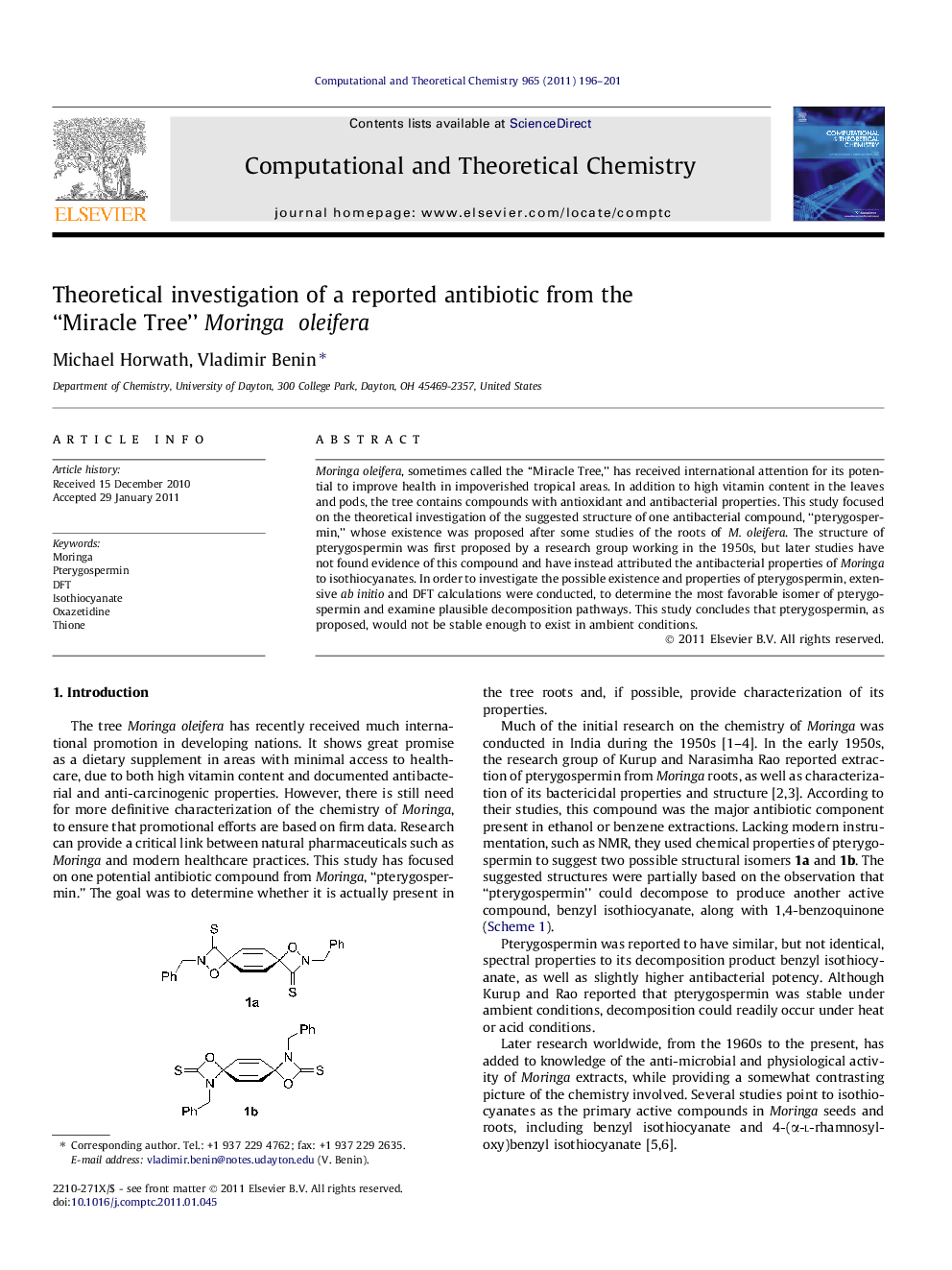| Article ID | Journal | Published Year | Pages | File Type |
|---|---|---|---|---|
| 5395207 | Computational and Theoretical Chemistry | 2011 | 6 Pages |
Abstract
Moringa oleifera, sometimes called the “Miracle Tree,” has received international attention for its potential to improve health in impoverished tropical areas. In addition to high vitamin content in the leaves and pods, the tree contains compounds with antioxidant and antibacterial properties. This study focused on the theoretical investigation of the suggested structure of one antibacterial compound, “pterygospermin,” whose existence was proposed after some studies of the roots of M. oleifera. The structure of pterygospermin was first proposed by a research group working in the 1950s, but later studies have not found evidence of this compound and have instead attributed the antibacterial properties of Moringa to isothiocyanates. In order to investigate the possible existence and properties of pterygospermin, extensive ab initio and DFT calculations were conducted, to determine the most favorable isomer of pterygospermin and examine plausible decomposition pathways. This study concludes that pterygospermin, as proposed, would not be stable enough to exist in ambient conditions.
Keywords
Related Topics
Physical Sciences and Engineering
Chemistry
Physical and Theoretical Chemistry
Authors
Michael Horwath, Vladimir Benin,
